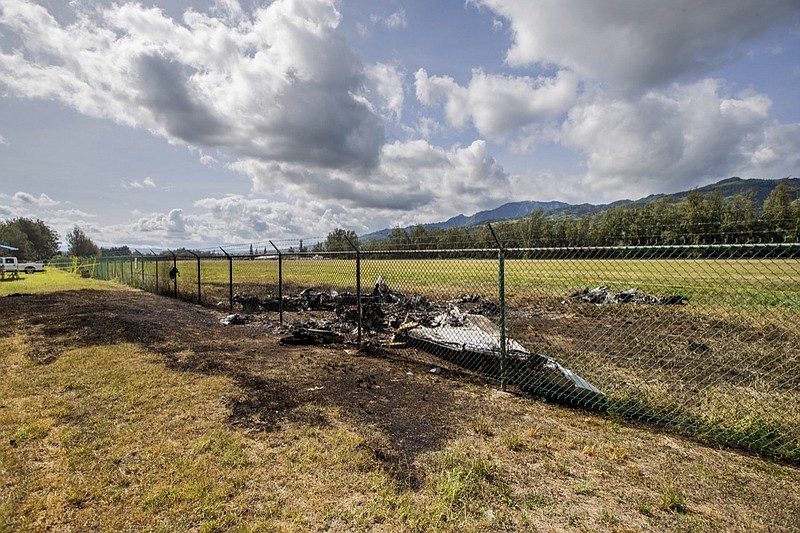HONOLULU (AP) - The National Transportation Safety Board on Monday called on the Federal Aviation Administration to tighten its regulations governing parachute operations as Hawaii officials released the names of seven of the 11 victims killed when their skydiving plane crashed last week.
The NTSB recommended to the FAA more than a decade ago that it strengthen its rules on pilot training, aircraft maintenance and inspection, and FAA oversight, board member Jennifer Homendy told a news conference in Honolulu.
She said the FAA hasn't acted on those recommendations.
"Are we trying to put the FAA on notice for this? Yes," Homendy said. "We identified several safety concerns in 2008 with respect to parachute jump operations. Accidents continue to happen. There have been fatalities since that time."
The FAA said in a statement it's implemented a number of changes to addresses NTSB's recommendations, including requiring safety inspectors to increase their monitoring of parachute operations. It said it revised safety guidance for parachute operators and increased safety outreach.
"The safety of all aircraft operations is the FAA's top priority," the statement said.
The plane crashed shortly after takeoff on Friday at a small airfield used by skydivers and the U.S. Army.
Homendy said FAA regulations for skydiving flights aren't as stringent as those for air tours and airlines. For example, she said parachute operators aren't required to act on manufacturer service bulletins, which are similar to manufacturer recalls.
Homendy said there have been 80 accidents and 19 deaths involving skydiving flights since 2008.
The seven identified by the Honolulu Medical Examiner's office included a Colorado couple in their 20s celebrating their first wedding anniversary, a Navy sailor, three Hawaii residents and a man from Minnesota.
Relatives told KCNC-TV that Ashley and Bryan Weikel of Colorado Springs were excited to go skydiving, but Bryan's mother, Kathy Reed-Gerk, begged him not to go.
Bryan's brother Kenneth Reed wrote on Facebook that his brother was "the absolute best person in the world" and that his wife was his "identical soul mate."
The Navy said Lt. Joshua Drablos, 27, was "an invaluable member" of the U.S. Fleet Cyber Command, based in Kunia, Hawaii. The medical examiner said Drablos was a Virginia resident but the Navy listed his home of record as Maryland.
The Minnesota man was Nikolas Glebov, 28, of St. Paul.
Jordan Tehero of Hawaii's Kauai Island was a budding videographer who fell in love with skydiving.
His father, Garret, told The Associated Press the 23-year-old took up skydiving a few years ago as a distraction from the breakup of a relationship. Then he "fell in love" with the sport, he said.
The other two Hawaii residents were Daniel Herndon and Michael Martin.
Autopsies found all 11 died of multiple blunt-force injuries from the crash.
The identities of the remaining four victims will be released once they have been confirmed, the medical examiner's office said.
The victims included 10 men and one woman.
The plane was carrying skydivers from the Oahu Parachute Center, a North Shore business about an hour's drive north of Honolulu.
The same plane sustained substantial damage to its tail section in a 2016 accident while carrying skydivers over Northern California. Repairs were then made to get the plane back into service, and those records along with inspection reports on the plane are part of the NTSB's investigation.
Federal investigators flew to Hawaii to conduct the probe of the crash. They expect to release a preliminary report in about two weeks, but the final report - which will include the cause of the crash - could take up to two years to be released.
Jordan Tehero's parents both expressed worries over his new hobby.
"Because of our fear, we wanted him to stop," the father said. "But he didn't have the fear that we had, so he just continued."
Any fears he may have had were taken care of with prayer. "He always told me, 'Dad, I pray before every flight, before every jump I pray,' " the father said.
Friday's crash was the most deadly civil aviation accident in the United States since a 2011 Reno Air Show wreck killed a pilot and 10 spectators in Nevada.
